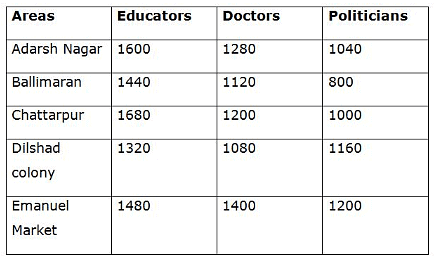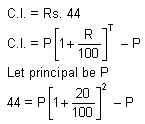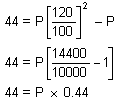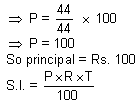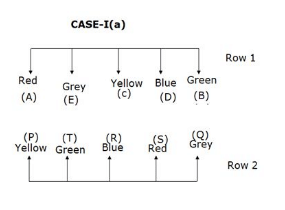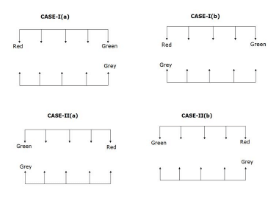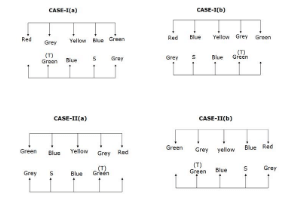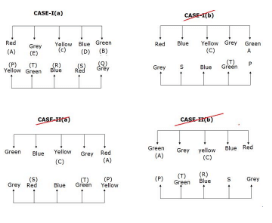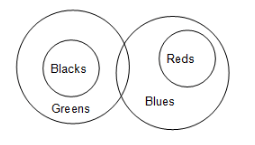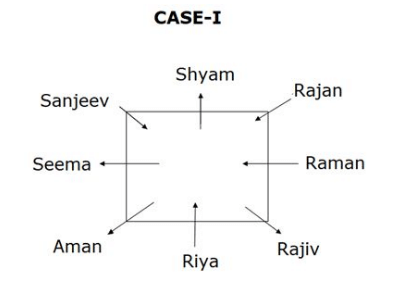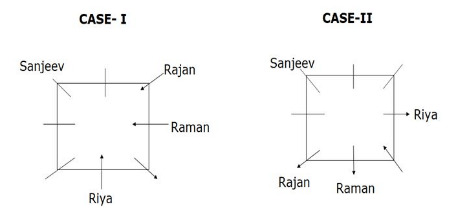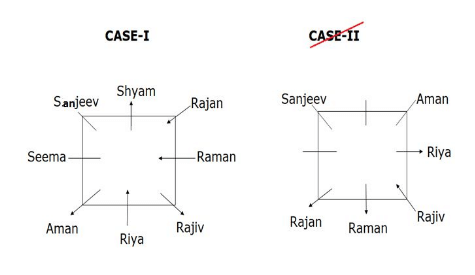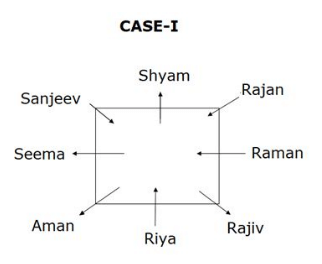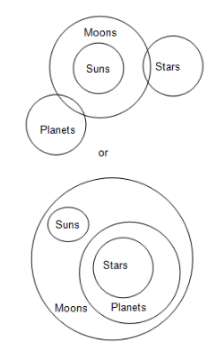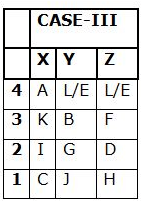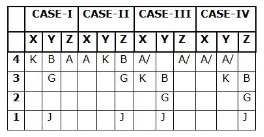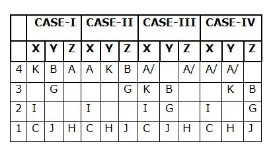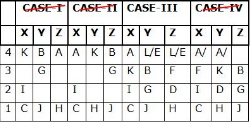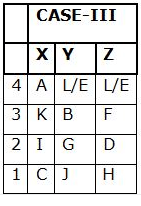PFRDA Assistant Manager Phase 1 Mock Test - 6 (Paper 1) - Insurance Exams MCQ
30 Questions MCQ Test PFRDA Assistant Manager Mock Test Series 2025 - PFRDA Assistant Manager Phase 1 Mock Test - 6 (Paper 1)
Directions: Read the following passage carefully and answer the questions given beside.
Remote sensing and GIS are promising tools for handling spatial and temporal data and help in integrating them for successful planning of natural resources. It is the science of measuring the earth using sensors mounted on high-flying aircrafts or satellites. These sensors collect data in the form of images and provide insights for manipulating, analysing and visualising those images. Since natural resources are not uniformly distributed and are spatially varied, it is challenging to capture the correct picture. Management of natural resources calls for scientific tools for timely and accurate dissemination of information. In natural resource management, remote sensing and GIS are mainly used in the mapping process. These techniques are useful in management of land, soil, coastal, watershed, urban and many more.
In India, the agriculture sector alone sustains the livelihood of around 50 percent of the population. Therefore, an increase in crop productivity has been a major concern. Since, the scope for increasing area under agriculture is limited, advanced crop production forecasting is required for better policymaking. Indian Space Research Agency (ISRO) and Indian Council of Agricultural Research (ICAR) successful experiment-Agricultural Resource Inventory and Survey Experiment (ARISE) used aerial colour photographs to estimate crop acreage in many states of India. Other Important uses of remote sensing include crop identification, stress detection, and crop yield modelling, drought monitoring, land degradation mapping and more. Urbanisation is important and inevitable for development, but its proper planning and management is crucial for sustenance. One of the important features of GIS is multilayered mapping. This kind of mapping helps municipal corporations, town planning boards to build cities that are better organised. The information systems with socio-economic data overlaid upon satellite data makes urban planning cost-effective and accurate.
Coastal ecosystems have high ecological significance. GIS and remote sensing data are used to study coastal ecosystems and marine living resources which include habitats like mangroves, coral reefs and more. Apart from this, suspended shoreline dynamics can be studied and climatic changes leading to cyclones and sea level rise may be of special interest too. Geospatial data is effective in the analysis and determination of factors that affect the utilisation of these resources. The technologies provide a platform through which we can generate information that can be used to make sound decisions for sustainable development of the natural resources of India.
Q. In the given context of the passage, why are GIS and remote sensing tools crucial in the agriculture sector?
I. This sector alone sustains the livelihood of around 50 percent of the population.
II. GIS and remote sensing would help in advanced crop production forecasting.
III. Drought monitoring can be done using GIS and remote sensing tools.
II. GIS and remote sensing would help in advanced crop production forecasting.
III. Drought monitoring can be done using GIS and remote sensing tools.
Directions: In the question given below there are two statements, each statement consists of two blanks. You have to choose the option which provides the correct set of words that fits both the blanks in both the statements appropriately and in the same order making them meaningful and grammatically correct.
I. The government has ________ over Rs 35,000 crore in cess for the welfare of construction workers employed in the high-risk and hazardous construction industry that is mostly ________ by private companies.
II. Chinese mobile phone maker Huawei said it never ________ or stored Facebook user data, after the social media giant acknowledged it gave access of data to such handset manufacturers albeit in a ________ way.
Direction: In each of the questions given below, a paragraph is given which has some blanks and those blanks have to be filled with the same word out of five words given below it. You have to choose that same word as your answer and fill up the blanks with that appropriate word.
His concern for the affected children is so ____________ that it can be understood without giving much thought. It is not his fault though because all his family members are ____________ in all their dealings and they do not care much about anything in life. It is because of this ____________ nature of his family that they have not got many friends in the neighbourhood.
Let children learn to judge their own work. A child ...(1)... to talk does not learn ...(2)... being corrected all the time ...(3)... corrected too much, he will ...(4)... talking. He notices a thousand times a day the difference between the ...(5)... he uses and the language those around him use.
What will come in Option Two?
Let children learn to judge their own work. A child ...(1)... to talk does not learn ...(2)... being corrected all the time ...(3)... corrected too much, he will ...(4)... talking. He notices a thousand times a day the difference between the ...(5)... he uses and the language those around him use.
What will come in Option Three?
Let children learn to judge their own work. A child ...(1)... to talk does not learn ...(2)... being corrected all the time ...(3)... corrected too much, he will ...(4)... talking. He notices a thousand times a day the difference between the ...(5)... he uses and the language those around him use.
What will come in Option Four?
Directions: Given below are four jumbled phrases of a sentence. Out of the given options, pick the one that gives their correct order.
A. The plan's
B. Vigorously the UN will
C. Back it up with action
D. Success depends on how
Directions: In the following question, a sentence is given divided into four parts (A), (B), (C) and (D) which are jumbled up in any random order. You have to arrange the four parts to make a contextually and grammatically meaningful sentence.
typically, when we eat, our bodies (A) / break down the carbohydrates from the food and (B) / turn them into a form of sugar known as glucose, (C) / one of the body’s preferred fuels (D)
Directions: Rearrange the following five sentences A, B, C, D and E in the proper sequence to form a meaningful paragraph and then answer the question given beside.
A. It appears that one of the lessons New Delhi learnt from the standoff with China along the Line of Actual Control in 2020 was that it was perhaps a consequence of India’s growing proximity to the U.S.
B. New Delhi has had a complicated relationship with Washington which is increasingly getting normalised and interests-driven.
C. Or, should India continue the strategic partnership with the U.S. irrespective of what China thinks about it?
D. Despite its withdrawal from the region, Washington is seeking to re-engage southern Asia (Pakistan, South Asia in general, the Indo-Pacific, and perhaps even the Taliban).
E. If so, should New Delhi temper its relations with the U.S., particularly in the Indo-Pacific, in the hope that this will keep Beijing’s aggression at bay?
Which of the following will be the FOURTH statement after the rearrangement of sentences?
Directions: In each of the questions below, a sentence has been broken into four parts with one word highlighted in underline in each fragment. From the given options, identify the word which expresses a meaning opposite to the given sentence, with the highlighted word replaced by a word of the opposite meaning.
Vistara world will introduce (A)/ a live moving map (B)/ display that allows (C)/ passengers to track their aircraft.(D)
Directions: In the given question, a word has been mentioned and there are three ways in which the word has been used in either similar or different ways. You are required to check which of the sentences have correctly used the highlighted word, and mark that as your answer.
Square
I. Mr. Batra wanted to make sure we were square with the court's decision and not subject to a lawsuit.
II. After the party, Mohan and Meera decided to square up the bill.
III. We had been as square with the Startup as any Venture Capitalist could be.
Little water / that was left / in the bottle was not enough / to quench the thirst of two persons.
Read the following information carefully and answer the questions based on it.
The following Bar graph shows the number of Educators, Politicians and Doctors in five different areas of Delhi
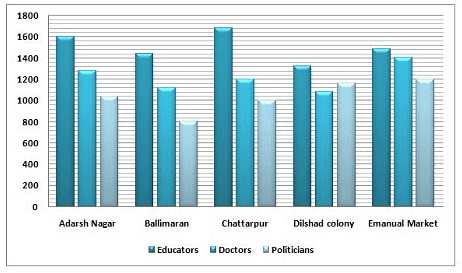
Find M/N x 100, where
M = sum of doctors in Adarsh Nagar and Ballimaran
N = Sum of Politicians in Ballimaran and Chattarpur
If the compound interest on a certain sum for two years at 20% p.a. is Rs. 44, then what will be the simple interest on the same sum at the same rate for 2 years?
Shon invested Rs.x in scheme A which offers simple interest at 15% per annum for 4 years. He also invests Rs. (x + 1000) in scheme B which offer compound interest at 10% per annum for 2 years and after 2 years he received the compound interest is Rs.714. How much amount of interest received by Shon in scheme A?
Study the following information carefully and answers the questions given below.
Quantity I: P and Q together can complete the same work in 18 days while P and R can complete the same work in 17 1/2 days. If the ratio of efficiency of Q and R is 5 : 6, then find the time taken by P alone to complete the work?
Quantity II: A and B together can complete a piece of work in 35 days. If the ratio of efficiency of work of A, B and C is 4 : 5 : 6, then find the time taken by A, B and C together to complete the whole work?
Study the following information carefully and answer the questions given below.
Five students Akash, Aravind, Banu, Dany and Ken participated in two exams. ie, CAT and GATE. Number of GATE exams written by Akash is 3 which are 2 less than number of CAT exams written by him. The ratio of the number of CAT exams to GATE exams written by Aravind is 1 : 2. Total number of exams written by Aravind is 6 which are 2 less than the total number of exams written by Akash. Ratio of number of CAT exams written by Akash, Banu and Dany is 1 : 2 : 3. Number of GATE exams written by Dany is 1 less than the number of CAT exams written by Akash. Total number of exams written by Dany is 4 more than the total exams written by Ken. The GATE exams written by Banu are 5 which are equal to the number of GATE exams written by Ken.
What is the ratio of number of CAT exams to GATE exams written by Banu?
Study the following information carefully and answer the questions given below
Ten persons are sitting on two parallel rows facing each other. In row -1 A, B, C, D and E are sitting faces south and In row-2 P, Q, R, S and T are sitting facing north but not necessarily in the same order. They like different colors Red, green, yellow, blue and Grey and in a row, each of them likes different colors and no one who likes the same colors is facing each other. All the information is not necessarily in the same order.
The one who likes red and green color in row 1 are sitting at the ends of the row. The one who likes grey in row-2 sits at one end of the row. S sits adjacent to both who likes blue and grey color. T likes the Green color and sits opposite to the one who likes grey. P and A are sitting opposite to each other. R sits second to the right of P and none of them likes grey. C likes yellow. B neither likes red nor sits adjacent to C. Neither D nor B is adjacent to A.
Which of the following statements is/are true?
A word arrangement machine when given an input line of words and number rearranges them following a particular rule in each step. The following is an illustration of input and steps of arrangement. Study the following information carefully and answer the questions given below:
Input: 81 Tiger 98 64 lion 25 96 crow dog 89 cat rabbit
Step –I: 3 dbu 81 tiger 98 64 lion 96 crow dog 89 rabbit
Step - II: 3 dbs 10 bqnv 81 tiger 98 lion 96 dog 89 rabbit
Step –III: 3 dbs 10 bqnv 7 eph tiger 98 lion 96 89 rabbit
Step - IV: 3 dbs 10 bqnv 7 eph 1 khnm tiger 98 96 rabbit
Step - V: 3 dbs 10 bqnv 7 eph 1 khnm 15 qzaahs tiger 98
Step - VI: 3 dbs 10 bqnv 7 eph 1 khnm 15 qzaahs 17 ujhfs
Input: Great 13 61 learning 94 heavier nose given 88 95 99 heaven risen
Which element is 3rd to the right of fifth from the left end in 3rd step?
Study the following information carefully and answer the questions given below:
In each of the following questions, the relationship between different elements is shown in the statements followed by some conclusions. Find a conclusion which logically follows.
Statement:
N = M > S ≤ Q; A = B < T; S > Z; B > M =O
Conclusion:
I. M < T
II. A > Z
II. Q < Z
Directions: In the question below are given four statements, followed by three conclusions numbered I, II and Ill. You have to take the given statements to be true even if they seem to be at variance from commonly known facts. Read all the conclusions and then decide which of the given conclusions logically follow(s) from the given statements, disregarding the commonly known facts.
Statements:
Only greens are blacks.
All reds are blues.
Some greens are blues.
No reds are greens.
Conclusions:
I. Some blues are not reds is a possibility.
II. Some reds are blacks.
III. Some blues are greens.
Study the following information carefully and answer the questions given below:
Eight friends are sitting on a square table in which there are 6 boys – Shyam, Aman, Raman, Rajiv, Sanjeev and Rajan and two girls- Seema and Riya. Four friends are sitting in the middle of the side of the table and four are sitting at the corner of the table. No girl is sitting at the corner of the table. Some persons are facing towards the center and some are facing away from the centre and not more than two persons are sitting together facing in the same direction. All the information is not necessarily in the same order.
Raman sits second to the right of Riya and both are facing in the same direction. Seema sits adjacent to Sanjeev, who is neither adjacent to Riya nor Raman. Sanjeev sits second to the right of Rajan, who is facingthe same direction as Riya. One person is between Rajiv and Aman, who is not sitting opposite to Sanjeev, where Rajiv is facing outward direction. More than three persons are sitting between Raman and Shyam, when counted left from Raman. The one who sits second to the left of Shyam is facing the same direction as Shyam. Shyam and Aman are facing in the same direction.
What is the position of Sanjeev with respect to Rajiv?
Directions: In the question given below, a given statement is followed by assumptions I and II. An assumption is something supposed or taken for granted. You have to consider the statement and the following assumptions and then decide which of the assumptions is/are implicit in the statement.
Give answer (A) if only assumption I is implicit.
Give answer (B) if only assumption II is implicit.
Give answer (C) if either I or II is implicit.
Give answer (D) if neither I nor II is implicit.
Give answer (E) if both I and II are implicit.
Statement: Anita's performance in "Analog and Digital Devices" has marred her engineering grade.
Assumptions:
I. "Analog and Digital Devices" has a substantial weightage in engineering grade.
II. Anita's performance in other subjects of same weightage was better than that in "Analog and Digital Devices".
Directions: In the question below are given four statements, followed by three conclusions numbered I, II and Ill. You have to take the given statements to be true even if they seem to be at variance from commonly known facts. Read all the conclusions and then decide which of the given conclusions logically follow(s) from the given statements, disregarding the commonly known facts.
Statements:
Only moons are suns.
Some stars are moons.
Some planets are moons.
No suns are planets.
Conclusions:
I. All stars are planets is a possibility.
II. Some stars are suns is a possibility.
III. All planets are moons is a possibility.
Study the following information carefully and answer the questions given below:
Twelve persons are staying in a building having 4 floors numbered as 1-4 from bottom to top respectively. On each floor, there are 3 flats X, Y and Z where flat Y is east of flat X and west of flat Z. Only one person is staying in each flat.
K lives immediate west of B, who lives just above G’s flat. G lives above J in the same flat. There are two floors between A and J, and they are not in the same flats. I lives just above C’s flat who lives west of H and on an odd-numbered floor. Only one floor is between D and L. F lives above to D but below to E. C and A are not living in the same flat as F.
Which of the following pair lives adjacent to each other on the same floor?
Consider the following pairs:
1. Spartaeus karigiri - Discovered in Tamil Nadu
2. Peacock Tarantula - Arboreal Species
3. G7 Grouping - Includes Russia
4. UNESCO Creative Cities Network - Lucknow nominated for Gastronomy
How many pairs given above are correctly matched?
What is the key consequence of the misinformation surge following the crash of Air India flight AI171 as highlighted in the text?
Consider the following statements:
Statement-I:
The International Civil Aviation Organization (ICAO) is an intergovernmental specialized agency linked to the United Nations, primarily focusing on developing safe and efficient international air transport.
Statement-II:
ICAO promotes regional and international agreements to liberalize aviation markets and establishes legal standards to ensure safety is not compromised.
Which one of the following is correct in respect of the above statements?
_____________ is defined as the availability and equality of opportunities to access financial services and refers to a process by which individuals and businesses can access appropriate, affordable, and timely financial products and services.
Lok Adalats have been found suitable for the recovery of small loans. They cover NPA up



